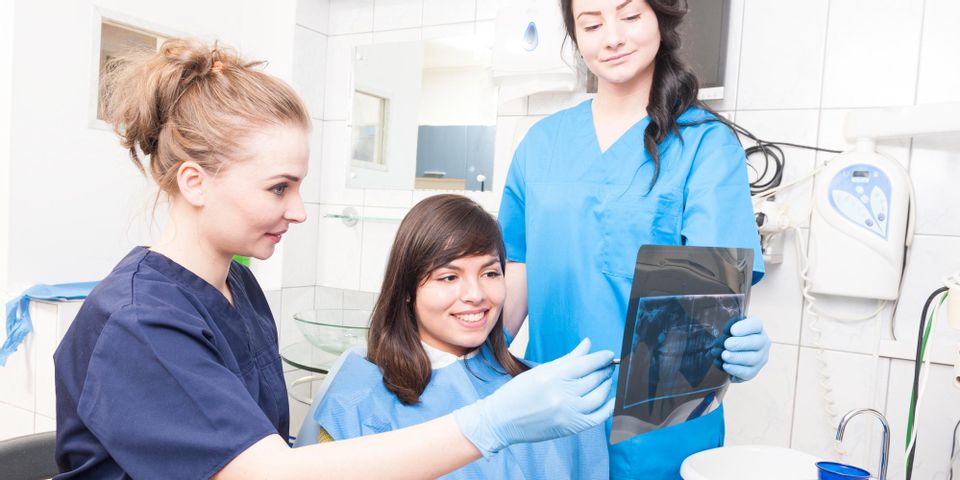How the X-Ray Has Helped Local Dentists for Over a Century

In 1895, a scientist named Wilhelm Konrad Röntgen accidentally discovered a form of electromagnetic energy that, when directed toward the human body, could pass through the skin to reveal images of underlying bones and tissues. This innovation, known as the X-ray, transformed the medical world, allowing doctors to diagnose internal health issues without the need for surgery. More than 120 years later, this technology continues to improve medical treatment—including that of dentistry. In honor of World X-Ray Day this November 8th, here are a few more interesting things to know about medical imaging and how your local dentist may use it
How Do Dental X-Rays Work?
During a dental X-ray, radioactive energy is directed through the mouth and onto a piece of film. Materials that do not absorb the energy—such as flesh—show up as black on the film. However, bones and harder tissues that do absorb X-rays will develop as varying levels of white in the final image. As a result, the X-ray process not only reveals what’s happening on the inside of teeth but also what they look like under the gums.
How Have Dental X-Rays Progressed Over the Years?
 Throughout most of the 20th century, dental X-rays relied on the time-consuming process of developing images onto film. However, in the 1990s, digital X-rays rose into popularity and transformed the way dentists captured images of teeth. Instead of transmitting the image to film, digital technology made it possible to capture results electronically on computers. This advancement made it much easier for dentists to process and examine results. Digital X-rays also required less radiation exposure, making it even safer for patients.
Throughout most of the 20th century, dental X-rays relied on the time-consuming process of developing images onto film. However, in the 1990s, digital X-rays rose into popularity and transformed the way dentists captured images of teeth. Instead of transmitting the image to film, digital technology made it possible to capture results electronically on computers. This advancement made it much easier for dentists to process and examine results. Digital X-rays also required less radiation exposure, making it even safer for patients.
Today, local dentists use a form of X-ray technology known as “cone beam imaging.” Essentially, this practice involves using several digital X-rays to capture images of teeth at multiple angles. These multiple perspectives make it possible for dentists to see three-dimensional views of teeth and gums.
What Problems Can a Dental X-Ray Help Detect?
Dental X-rays are used to detect a wide range of oral health problems. For example, dark spots on teeth may reveal the location of cavities or root canal infections. X-rays may also show how wisdom teeth are growing in and if they need to be removed to prevent painful problems. If you need dental implants, an X-ray can also help reveal if you have sufficient jaw bone material to support the implant or if bone grafting is necessary.
When you want to get an in-depth look at your dental health, Oral Surgery Center, S.C. has the resources to help. Serving patients in Baraboo, WI, this local dentist will use advanced imaging tools to quickly, safely, and comfortably photograph your teeth and gums. If problems are detected, these caring specialists will guide you through targeted treatments to relieve pain and restore your smile—including wisdom tooth extraction and facial trauma surgery. To learn more about these oral surgery services, visit this practice online. For appointments, call (608) 356-2112.
About the Business
(11 reviews)
Have a question? Ask the experts!
Send your question

